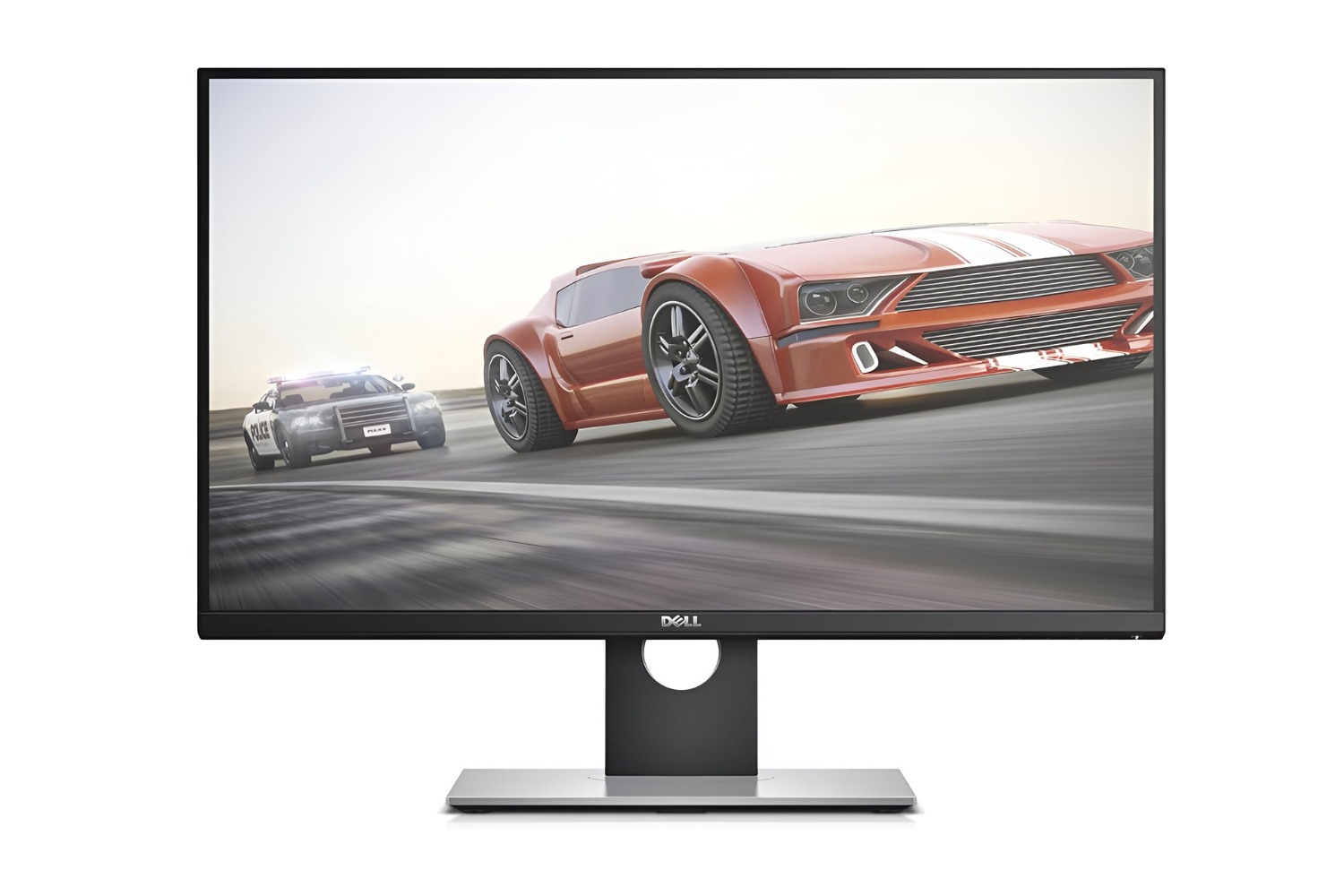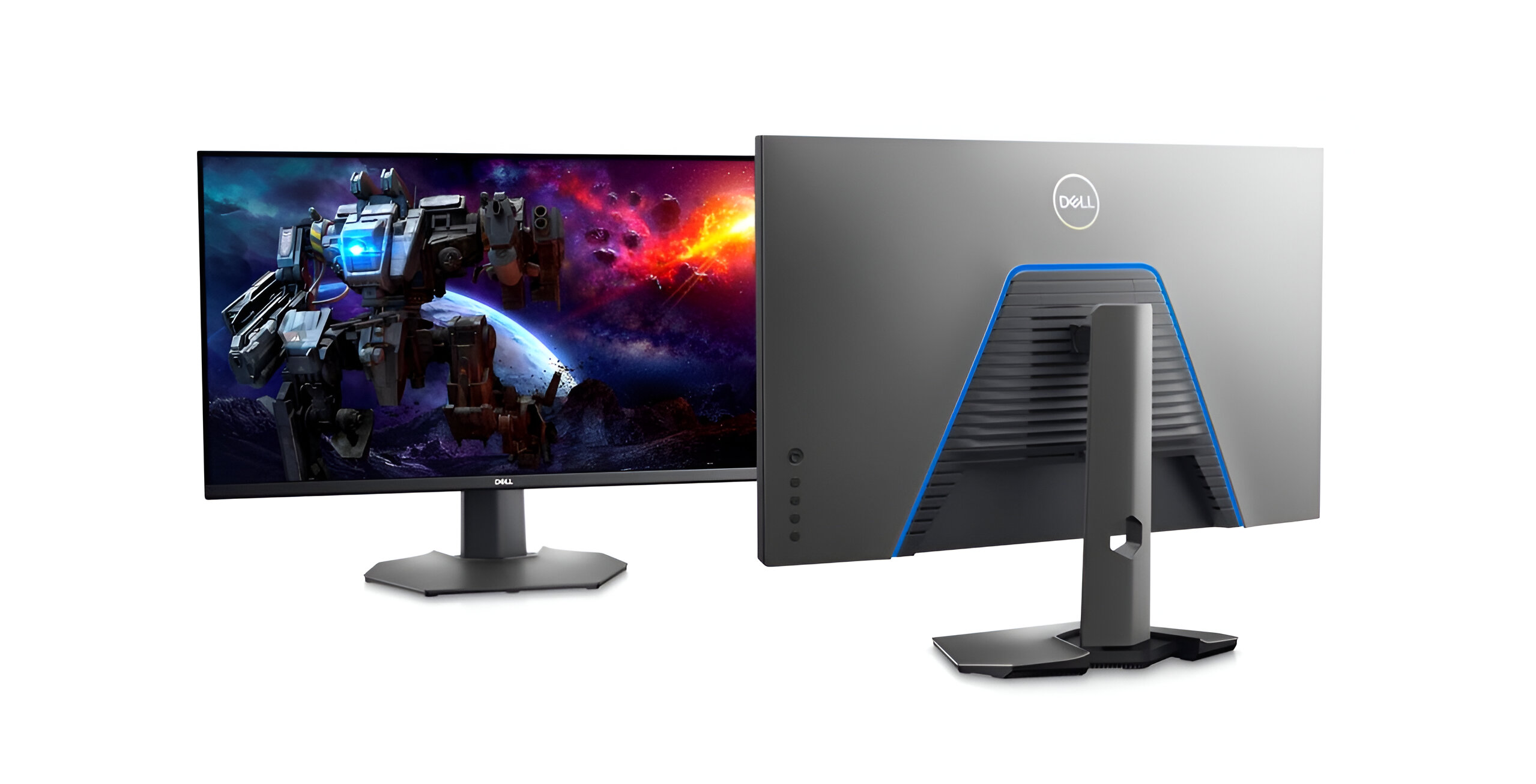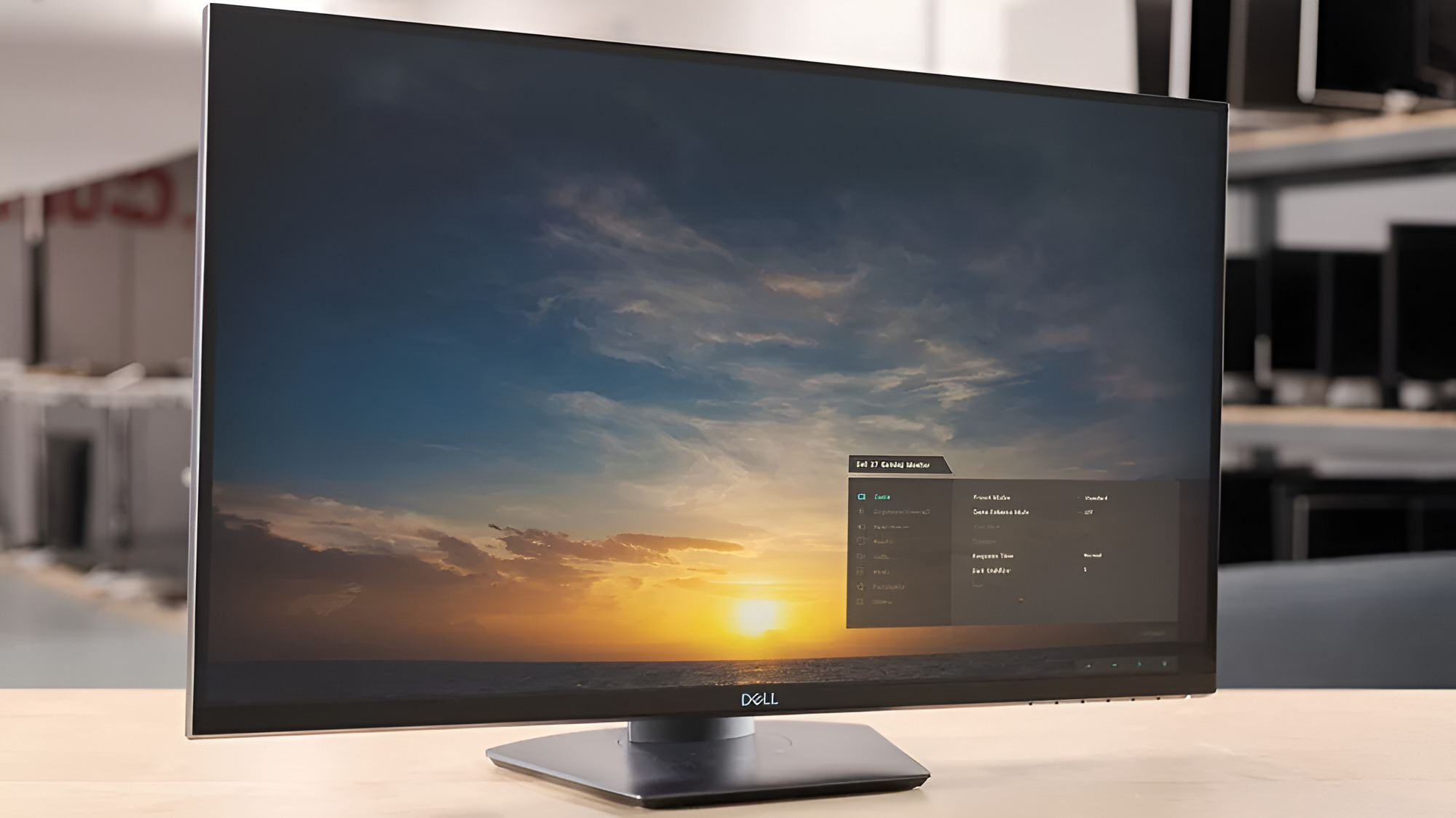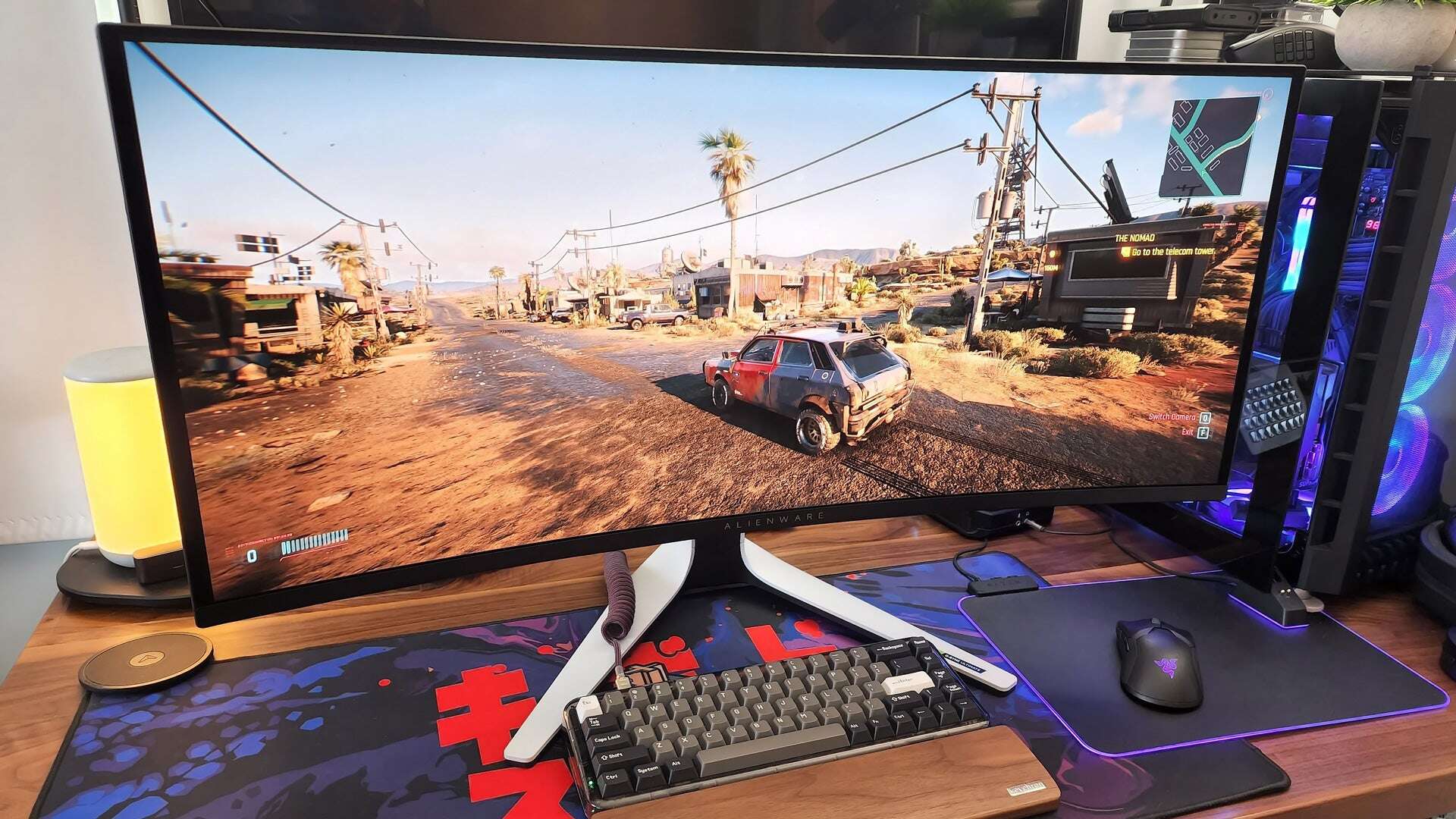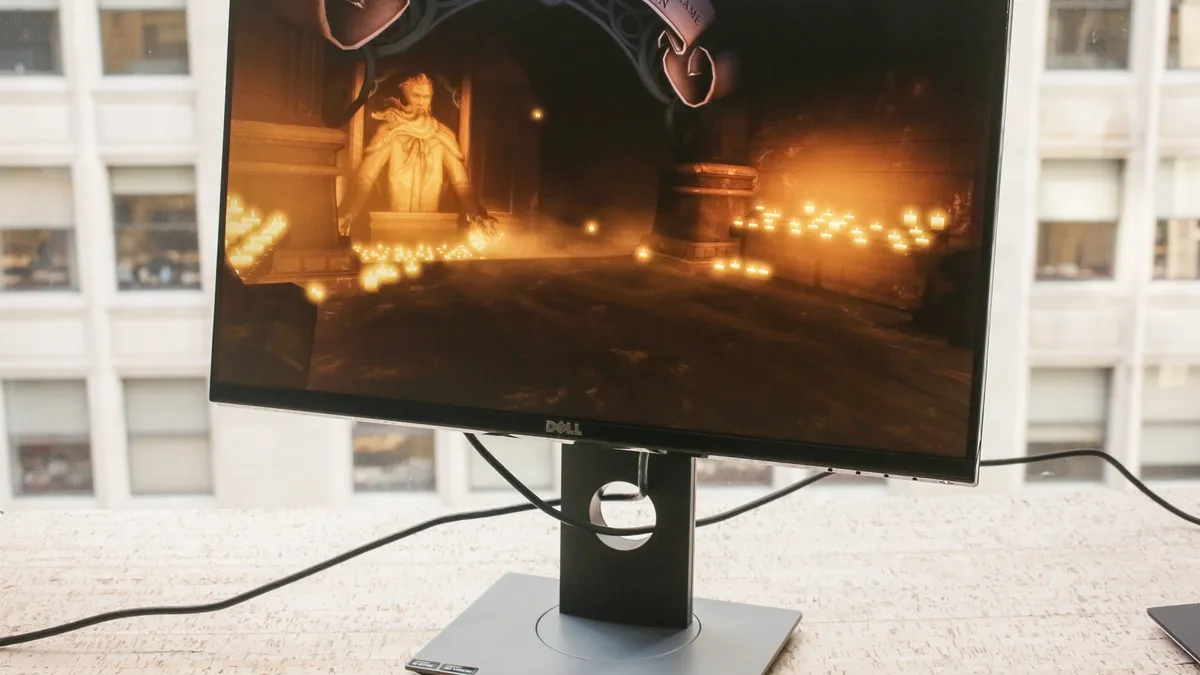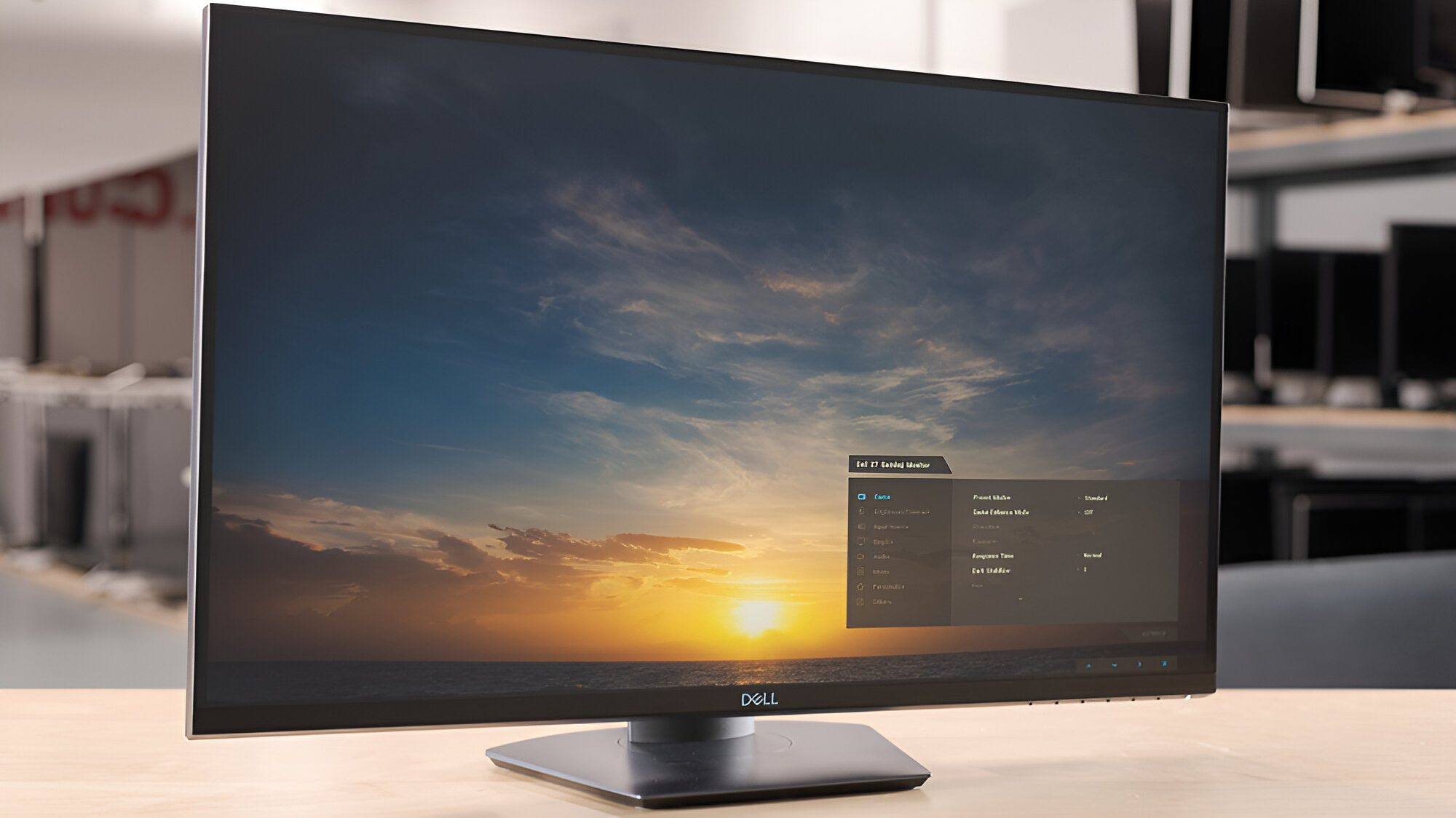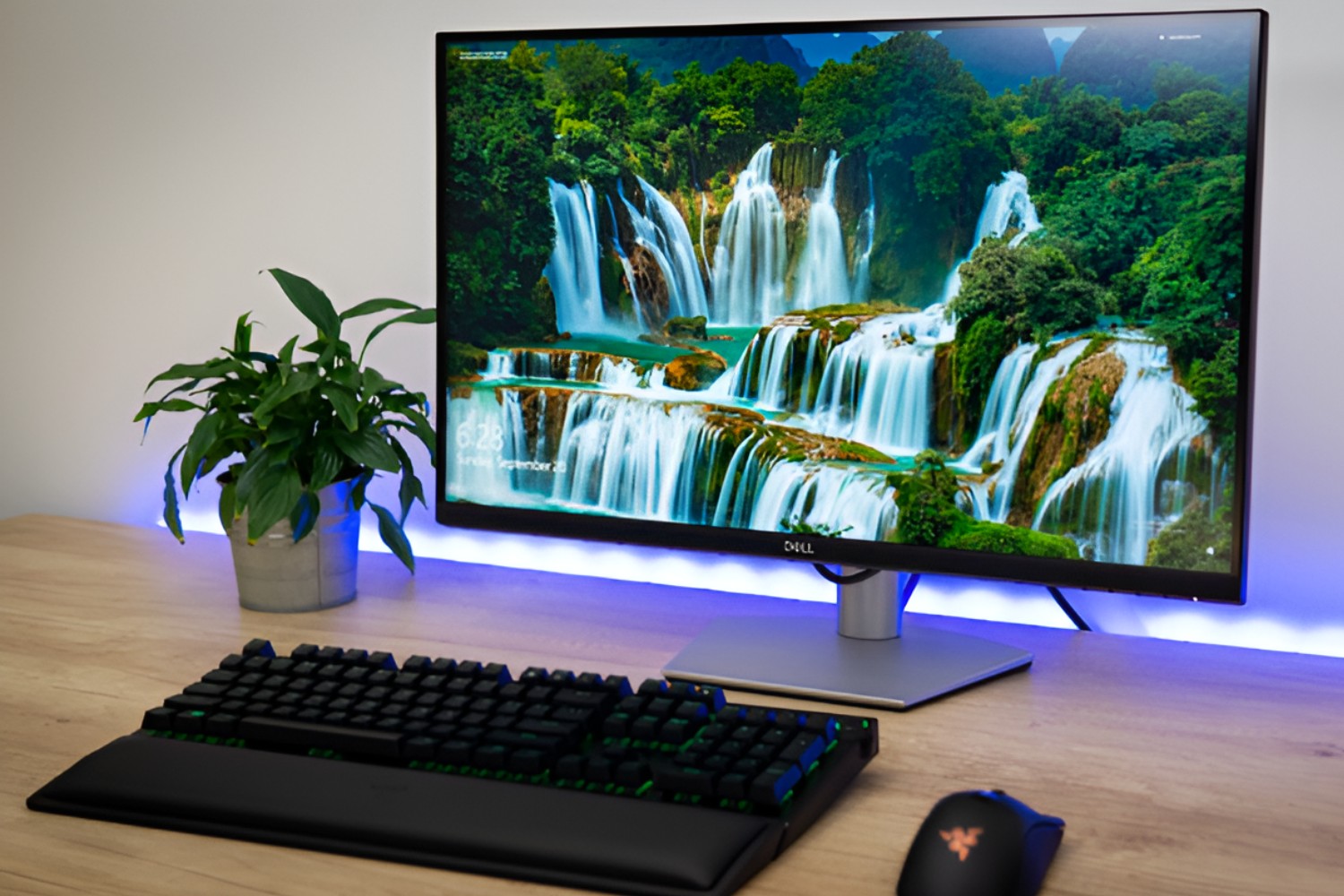Introduction
Welcome to our comprehensive guide on the Dell 27 Gaming Monitor – S2716DG. If you’re in the market for a gaming monitor, it’s important to consider various factors, including panel type. The panel type can greatly impact the overall visual experience, including color accuracy, viewing angles, and response time. In this article, we’ll explore the different panel types available in gaming monitors and provide an overview of the S2716DG.
When it comes to gaming, having a monitor that delivers stunning visuals and smooth gameplay is crucial. The panel type plays a significant role in determining the quality of the display. While there are various panel types available, the most common ones include Twisted Nematic (TN), In-Plane Switching (IPS), and Vertical Alignment (VA). Each panel type has its own set of characteristics and benefits, so it’s essential to understand the differences between them.
The Dell S2716DG Gaming Monitor is a popular choice among gamers due to its impressive specifications and performance. But what panel type does it feature? In the following sections, we’ll delve into the specifics of each panel type and discuss how to determine the panel type of the S2716DG. We’ll also explore the pros and cons of each panel type, empowering you to make an informed decision when choosing a gaming monitor.
So, whether you’re a casual gamer or a pro player, sit back, relax, and let’s dive into the fascinating world of panel types and the Dell S2716DG Gaming Monitor!
What Panel Types Are There?
Before we explore the specific panel type of the Dell S2716DG Gaming Monitor, let’s first take a closer look at the three main panel types commonly found in gaming monitors: Twisted Nematic (TN), In-Plane Switching (IPS), and Vertical Alignment (VA).
1. Twisted Nematic (TN): TN panels are the most prevalent and budget-friendly option among gaming monitors. They offer fast response times, typically around 1ms, which minimizes motion blur and ghosting, making them ideal for fast-paced games. TN panels also have high refresh rates, usually reaching 144Hz or higher, allowing for fluid gameplay. However, they can suffer from narrower viewing angles and slightly less accurate color reproduction compared to other panel types.
2. In-Plane Switching (IPS): IPS panels are known for their excellent color accuracy and wide viewing angles. They produce vibrant and lifelike colors, making them a popular choice for gamers who prioritize visual quality and immersive experiences. While IPS panels generally have slower response times compared to TN panels, they still offer adequate performance for most gamers. IPS monitors can also provide more consistent color reproduction across the entire screen.
3. Vertical Alignment (VA): VA panels strike a balance between TN and IPS panels. They offer better contrast ratios and deeper blacks than TN panels, enhancing the overall visual experience. VA panels have wider viewing angles compared to TN panels, but they may fall slightly short in terms of color accuracy and response times. Despite these minor drawbacks, VA panels are popular among gamers who value a good balance between image quality and performance.
Each panel type has its own strengths and weaknesses, and the right choice ultimately depends on your specific gaming needs and preferences. Consider factors such as response time, color accuracy, viewing angles, and budget to determine which panel type aligns best with your requirements.
Now that we have a general understanding of the different panel types available, let’s move on to exploring the specific panel type present in the Dell S2716DG Gaming Monitor.
Overview of the Dell S2716DG Gaming Monitor
The Dell S2716DG is a highly regarded gaming monitor that boasts a range of impressive features designed to enhance your gaming experience. This 27-inch monitor offers a display resolution of 2560×1440 pixels, providing sharp and detailed visuals. Its sleek and modern design adds a touch of elegance to any gaming setup.
One standout feature of the Dell S2716DG is its high refresh rate of 144Hz. This ensures smooth and fluid motion, allowing you to react quickly in fast-paced games and reducing the occurrence of motion blur. Coupled with the fast response time of 1ms, the monitor delivers crisp and clear images, minimizing ghosting and lag.
Equipped with Nvidia G-Sync technology, the Dell S2716DG synchronizes the monitor’s refresh rate with the graphics card, eliminating screen tearing and stuttering. This feature provides a more immersive and seamless gaming experience, making it an excellent choice for avid gamers.
The monitor also offers an adjustable stand, allowing you to tilt, swivel, and pivot the screen to find the most comfortable viewing position. Furthermore, it supports VESA mounting, enabling you to mount the monitor on a wall or an aftermarket stand for added flexibility.
In terms of connectivity, the Dell S2716DG features DisplayPort 1.2, HDMI 1.4, four USB 3.0 ports, and an audio output, providing you with various options for connecting your gaming devices and peripherals.
While the Dell S2716DG excels in several areas, it is important to note that its panel type contributes significantly to its overall performance. Identifying the panel type is crucial in understanding the monitor’s strengths and limitations, so you can make an informed decision based on your specific gaming requirements.
Now that we have an overview of the Dell S2716DG Gaming Monitor, let’s delve into its panel type and explore the specific characteristics and benefits it offers to gamers.
Panel Type: Twisted Nematic (TN)
The Dell S2716DG Gaming Monitor features a Twisted Nematic (TN) panel, which is a widely used panel type in gaming monitors. TN panels are known for their fast response times, making them ideal for fast-paced gaming. With a response time of 1ms, the Dell S2716DG ensures minimal motion blur and ghosting, allowing for smooth and responsive gameplay.
One of the primary advantages of TN panels is their high refresh rate. The Dell S2716DG supports a refresh rate of 144Hz, ensuring that each frame is displayed smoothly and accurately. This high refresh rate provides a competitive edge for gamers by reducing input lag and enhancing the overall gaming experience.
Another characteristic of TN panels is their affordability. TN monitors are generally more budget-friendly compared to other panel types, making them a popular choice for gamers who don’t want to break the bank. Despite their affordability, TN panels still offer impressive performance, making them a reliable option for casual and competitive gamers alike.
However, TN panels do have a few drawbacks that are worth considering. One of the main limitations is their narrower viewing angles. When viewed from certain angles, the colors on a TN panel may appear washed out or distorted. This means that the Dell S2716DG may not provide the same color accuracy and consistency as other panel types, such as In-Plane Switching (IPS) or Vertical Alignment (VA) panels.
Additionally, TN panels tend to offer slightly inferior color reproduction. While the Dell S2716DG has a 8-bit color depth and can display 16.7 million colors, the color accuracy may not be as precise as what you would find in an IPS or VA panel. However, it’s important to note that recent advancements have improved the color performance of TN panels, and many users find the color representation to be more than satisfactory for gaming purposes.
In summary, the Twisted Nematic (TN) panel in the Dell S2716DG Gaming Monitor offers exceptional responsiveness and a high refresh rate, making it an excellent choice for gamers who prioritize fast-paced gameplay. While TN panels may lack the wide viewing angles and color accuracy of other panel types, the Dell S2716DG delivers a solid gaming experience at an affordable price point.
Panel Type: In-Plane Switching (IPS)
The Dell S2716DG Gaming Monitor utilizes an In-Plane Switching (IPS) panel, which is known for its exceptional color accuracy and wide viewing angles. IPS panels offer a significant improvement over TN panels in terms of color reproduction, making them an attractive choice for gamers who prioritize visual quality and accurate color representation.
One of the standout features of IPS panels is their ability to display vibrant and lifelike colors. With a 8-bit color depth and the capability to display 16.7 million colors, the Dell S2716DG ensures precise color reproduction, enhancing the overall visual experience. This makes IPS panels a great option for gamers who engage in content creation or require accurate color representation for graphics-intensive games.
In addition to exceptional color accuracy, IPS panels also provide wider viewing angles compared to TN panels. This means that the colors and contrast remain consistent, even when viewed from off-center positions. Whether you’re playing games with friends or need to adjust your viewing position, the Dell S2716DG ensures that everyone can enjoy a clear and consistent image.
Although IPS panels excel in color accuracy and wide viewing angles, they do have some trade-offs. One notable difference is the slower response time compared to TN panels. While the Dell S2716DG’s response time of 4ms is still considered decent for gaming, it may not be as suitable for highly competitive gamers who require the fastest response times to prevent motion blur and ghosting.
Another consideration with IPS panels is their higher cost compared to TN panels. The enhanced image quality and wider viewing angles come at a premium, making IPS monitors generally more expensive. However, many users find the improved color accuracy and visual experience well worth the investment, particularly if gaming is not solely about speed for them.
Overall, the Dell S2716DG’s In-Plane Switching (IPS) panel ensures stunning color accuracy and wide viewing angles. If you prioritize accurate color representation and prefer a more immersive gaming experience, the Dell S2716DG with its IPS panel is an excellent choice that delivers exceptional visual quality and reliability.
Panel Type: Vertical Alignment (VA)
The Dell S2716DG Gaming Monitor employs a Vertical Alignment (VA) panel, which offers a balance between the benefits of TN and IPS panels. VA panels provide deeper blacks and better contrast ratios compared to TN and IPS panels, resulting in a more immersive visual experience.
One of the standout features of VA panels is their enhanced contrast ratio. The Dell S2716DG delivers a contrast ratio of 1000:1, ensuring rich and vibrant colors with deep blacks. This allows for a more detailed and dynamic image, especially in dark scenes, which can enhance the overall gaming experience.
VA panels also offer wider viewing angles than TN panels, although they may not match the wider angles provided by IPS panels. With the Dell S2716DG, you can expect consistent color reproduction and minimal distortion when viewing the monitor from off-center positions, making it an ideal choice for multiplayer gaming sessions or when sharing the screen with others.
When it comes to response time, VA panels generally fall between TN and IPS panels. The Dell S2716DG offers a response time of 4ms, striking a balance between the faster response times of TN panels and the slightly slower response times of IPS panels. While it may not be as fast as TN panels for highly competitive gaming, it still provides smooth motion and minimal ghosting for most gaming scenarios.
However, one consideration with VA panels is their tendency to experience a phenomenon called “motion blur” in fast-paced games. This can result in slightly less clarity during fast movements or rapid transitions. It’s important to note that the Dell S2716DG implements various technologies, such as a high refresh rate of 144Hz and Nvidia G-Sync, to help mitigate motion blur and deliver a smoother gaming experience.
Lastly, it’s worth mentioning that VA panels often come at a more affordable price point compared to IPS panels, making them an attractive option for gamers who seek improved image quality without breaking the bank. The Dell S2716DG with its VA panel offers a cost-effective solution for gamers looking to enjoy deeper blacks, better contrast ratios, and wider viewing angles.
In summary, the Vertical Alignment (VA) panel in the Dell S2716DG Gaming Monitor provides improved contrast ratios, vibrant colors, and wider viewing angles. While it may have slightly slower response times than TN panels and potentially experience motion blur, the Dell S2716DG delivers a compelling visual experience at a more affordable price point.
How to Determine the Panel Type of the Dell S2716DG
Now that we’ve explored the three main panel types – Twisted Nematic (TN), In-Plane Switching (IPS), and Vertical Alignment (VA), you may be wondering how to determine the specific panel type of the Dell S2716DG Gaming Monitor. Here are a couple of ways to find out:
1. Manufacturer’s Specifications: The most reliable method is to refer to the manufacturer’s specifications for the Dell S2716DG. This information can usually be found on the product’s official website or in the user manual. Look for details such as the panel technology or type, which will explicitly state whether it’s a TN, IPS, or VA panel. In the case of the Dell S2716DG, the specifications will confirm that it utilizes a specific panel type.
2. Online Resources and Reviews: Another way to determine the panel type is by consulting online resources and reviews. Many monitor enthusiasts and gaming communities provide in-depth reviews and analysis of various monitors, including the Dell S2716DG. These reviews often mention the panel type and its characteristics. Be sure to rely on reputable sources and multiple reviews to get a comprehensive understanding of the Dell S2716DG’s panel type.
3. Comparison with Other Monitors: If you have access to other monitors with known panel types, you can visually compare the image quality and characteristics of the Dell S2716DG with those monitors. Each panel type has distinct visual traits, such as the viewing angles, color accuracy, and contrast. By comparing the Dell S2716DG’s performance with other monitors, you can make an informed estimation of its panel type.
Remember, accurately determining the panel type of the Dell S2716DG is essential in understanding its specific strengths and limitations. This knowledge can assist you in making an informed decision when evaluating if the monitor aligns with your gaming preferences and requirements.
By utilizing the manufacturer’s specifications, consulting reliable online resources, and perhaps performing visual comparisons, you’ll be able to confidently identify the panel type of the Dell S2716DG Gaming Monitor.
Pros and Cons of Each Panel Type
Now that we’ve explored the three main panel types used in gaming monitors – Twisted Nematic (TN), In-Plane Switching (IPS), and Vertical Alignment (VA), let’s take a closer look at their respective pros and cons:
Twisted Nematic (TN) Panels:
- Pros:
- Fast response times, typically 1ms, minimizing motion blur and ghosting
- High refresh rates, often reaching 144Hz or higher, providing smooth gameplay
- More budget-friendly compared to other panel types
- Cons:
- Narrower viewing angles, leading to washed-out colors from certain angles
- Slightly less accurate color reproduction compared to other panel types
In-Plane Switching (IPS) Panels:
- Pros:
- Excellent color accuracy, resulting in vibrant and lifelike colors
- Wide viewing angles, ensuring consistent colors from different positions
- Well-suited for graphic-intensive games and content creation
- Cons:
- Slower response times compared to TN panels
- Higher cost compared to TN panels
Vertical Alignment (VA) Panels:
- Pros:
- Deeper blacks and better contrast ratios compared to TN and IPS panels
- Wider viewing angles than TN panels, although not as wide as IPS panels
- Cost-effective option for improved image quality
- Cons:
- Potential for motion blur in fast-paced games
- Slightly slower response times compared to TN panels
As with any technology, each panel type has its own set of advantages and disadvantages. It’s important to consider your specific gaming needs and preferences when choosing a monitor. Are you a competitive gamer who values fast response times, or do you prioritize vibrant colors and wide viewing angles?
TN panels are often favored by gamers who prioritize speed and budget-consciousness. IPS panels are ideal for gamers seeking exceptional color accuracy and immersive visuals, albeit at a higher cost. VA panels strike a balance between TN and IPS panels, offering deeper blacks and wider viewing angles at a more affordable price point.
By understanding the pros and cons of each panel type, you can make an informed decision and find the monitor that best aligns with your gaming requirements and preferences.
Conclusion
Choosing the right panel type for your gaming monitor is a crucial decision that can greatly impact your overall gaming experience. In this comprehensive guide, we explored the three main panel types commonly found in gaming monitors: Twisted Nematic (TN), In-Plane Switching (IPS), and Vertical Alignment (VA).
We discussed the characteristics, advantages, and limitations of each panel type. TN panels offer fast response times and high refresh rates at an affordable price point, making them suitable for gamers who prioritize speed. IPS panels excel in color accuracy and wide viewing angles, delivering vibrant visuals for a more immersive experience. VA panels strike a balance between TN and IPS panels, with better contrast ratios and wider viewing angles at a more budget-friendly price.
When considering the Dell S2716DG Gaming Monitor, we learned that it features a specific panel type which enhances its performance. The Dell S2716DG with its Twisted Nematic (TN) panel ensures fast response times, high refresh rates, and an affordable price point, making it an excellent choice for gamers seeking quick and smooth gameplay.
It’s important to note that panel type is just one factor to consider when choosing a gaming monitor. Other factors such as resolution, size, connectivity options, and additional features should also be taken into account.
By understanding the pros and cons of each panel type and considering your specific gaming needs and preferences, you can make a well-informed decision and find the gaming monitor that provides the optimal visual experience for you.
Whatever your choice may be, whether it’s a TN, IPS, or VA panel, the Dell S2716DG Gaming Monitor offers a range of impressive features and specifications that can elevate your gaming setup to the next level. Now armed with knowledge about panel types, you can make a confident decision and enjoy an enhanced gaming experience.









